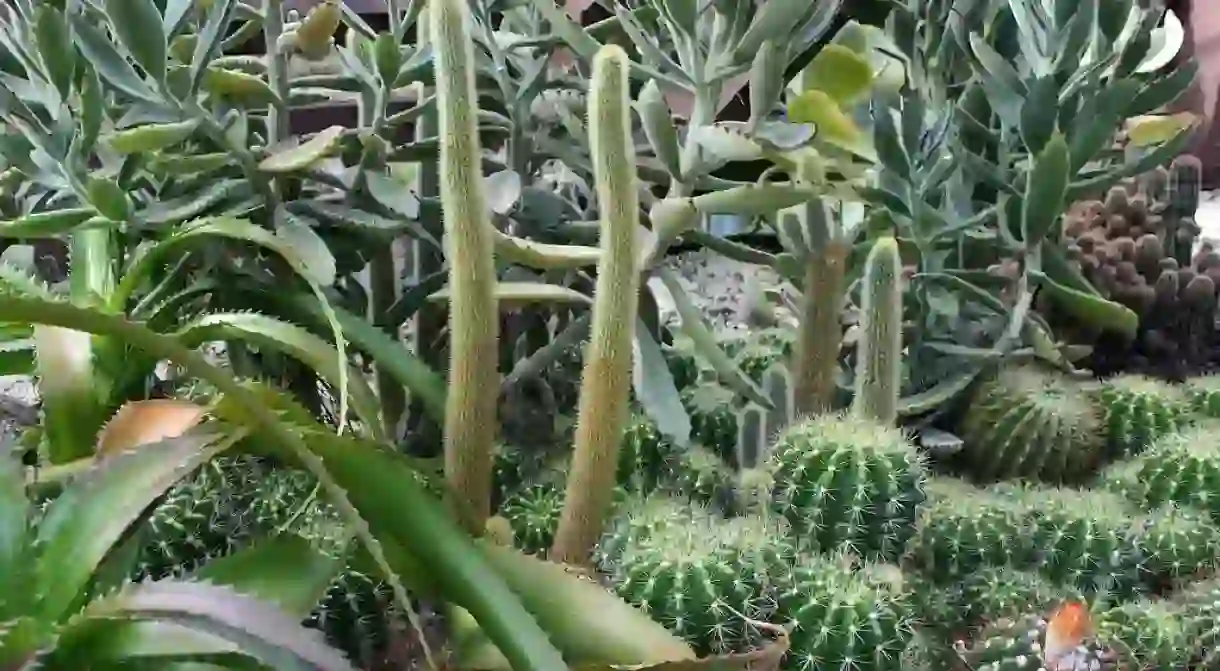Jardim Botânico: A Guide To Rio's Most Beautiful Garden

With over 6,500 different species of Brazilian and foreign plants, the Jardim Botânico (Botanical Gardens) in Rio de Janeiro is teeming with some of the most important and endangered flora in Brazil. Its rich biological diversity is spread throughout the park’s 1.5 squared kilometers and allows visitors to get up close and personal to some of the most exotic plants Brazil offers, making this attraction in Rio unmissable.
The park itself consists of the Botanical Garden, research centers, museums, collections, cultural centers and various facilities for visitors. The diversity of plants is extraordinary and is mostly made up of vegetation from the Atlantic forest yet approximately 40% is cultivated on site. This unique setup is home to 140 species of birds including the channel-billed toucan and the white-necked hawk. It also boasts wild monkeys and marmosets which are regularly spotted throughout the garden. One of the most famous and photographed area of the garden is the perfectly structured Avenue of Royal Palms, a 750 meter path fringed with 134 palms, all of which descended from a single palm.

A great way of getting around the park is to be your own tour guide. On the website there are three themed tours that are available for download, each one complete with a map that takes you around the park on a personally designed route with key points of interests. There is the ‘Art Route’ which showcases unique and rare art; the ‘History Route’ that highlights main artistic and archaeological sites; and the ‘Noble Trees Route’ that distinguishes important tree species.
The research center homes an incredible 32,000 volumes specialized in botany, with 650,000 labelled samples available for the public to access. There are also various collections to see such as the carnivorous plants, cacti, orchids and dried fruits. The photo collection is an exhibition of 12,000 photos during a timeline of over 100 years that highlight the different periods and aspects of the garden, including historical moments such as when Albert Einstein visited the park.

The park has various subsections that concentrate certain species of plants or concepts. The Amazon section homes unique plant species from the Amazon rainforest such as rubber, cocoa and capirona, a tree that changes color with the seasons. The vegetation in this section is thick and dense, typical of the Amazon. The Japanese Garden has 65 species of plants from Japan including bonsais and bamboos. One of the most fascinating areas is the Sensory garden that’s designed with sight-deficient people in mind. The garden is made up of plants such as cacti and herbs that can be touched or smelt to interact with the flora in a different way, as well as information plates written in braille.

As well as seeing the plants, there are museums on site too such as the Museum of Gunpowder and the Environment Museum. A famous area is the Espaço Tom Jobim (Tom Jobim Space), a cultural center made in honor of bossa nova singer Tom Jobim who included the gardens in many of his songs. The center is made up of a theater for music, performances and dances, an art exhibition and a complete collection of all of his songs.

There are public facilities available on site including a shop that sells fair trade products like clothes, books and decorations. There’s also a charming restaurant and café called La Bicyclette that’s French-owned and serves traditional french breads and other pastries, a complete breakfast and lunches. It’s also got various coffees, beers and wine on offer. The garden has been open to the public since 1822 and is open all daylight hours every day except December 25th and January 1st and costs R$10 to enter.
By Sarah Brown













